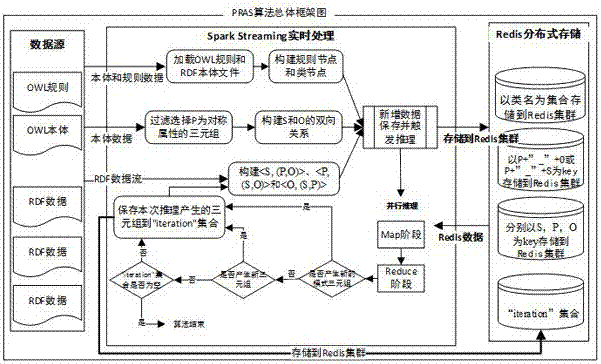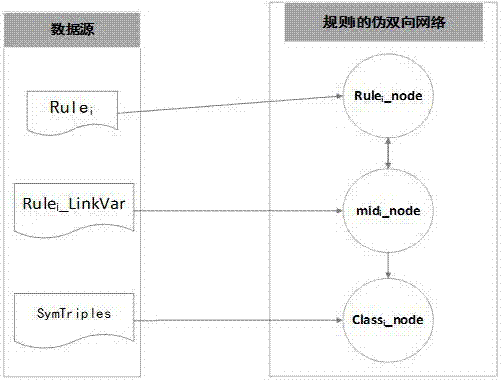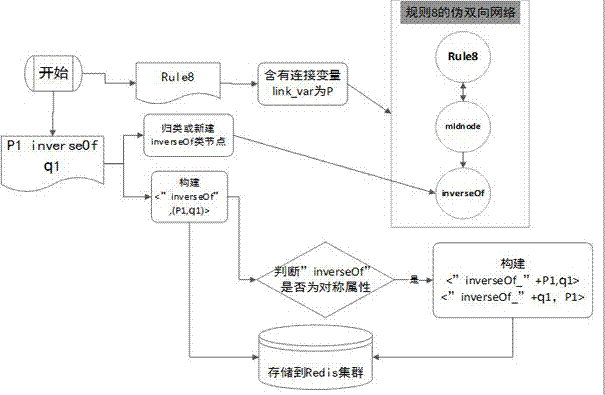Parallel reasoning algorithm for streaming RDF data
A data and algorithm technology, applied in the field of stream RDF data parallel reasoning algorithm, can solve problems such as difficult to obtain triples and inapplicability, and achieve the effect of reducing storage space and reasoning time, improving efficiency, and improving efficiency
- Summary
- Abstract
- Description
- Claims
- Application Information
AI Technical Summary
Problems solved by technology
Method used
Image
Examples
Embodiment Construction
[0017] The present invention will be further explained below in conjunction with the accompanying drawings and specific embodiments.
[0018] The streaming parallel reasoning proposed by the present invention is mainly divided into three parts: constructing a pseudo-bidirectional network, classifying streaming data and reasoning of OWLHorst rules. According to the characteristics of Spark Streaming and Redis, combined with the HAL algorithm, OWLHorst rules and RDF data ontology, a regular pseudo-bidirectional network is constructed, which contains class nodes and rule nodes corresponding to pattern triples. If there are class connection variables in the rule nodes, then Establish an intermediate node; then, regularly obtain batches of new data in the Streaming data stream and the data generated by the previous reasoning as input data, classify the input data or create a new corresponding node and store it in the corresponding Redis cluster; then, for the input The triplet data...
PUM
 Login to View More
Login to View More Abstract
Description
Claims
Application Information
 Login to View More
Login to View More - R&D
- Intellectual Property
- Life Sciences
- Materials
- Tech Scout
- Unparalleled Data Quality
- Higher Quality Content
- 60% Fewer Hallucinations
Browse by: Latest US Patents, China's latest patents, Technical Efficacy Thesaurus, Application Domain, Technology Topic, Popular Technical Reports.
© 2025 PatSnap. All rights reserved.Legal|Privacy policy|Modern Slavery Act Transparency Statement|Sitemap|About US| Contact US: help@patsnap.com



